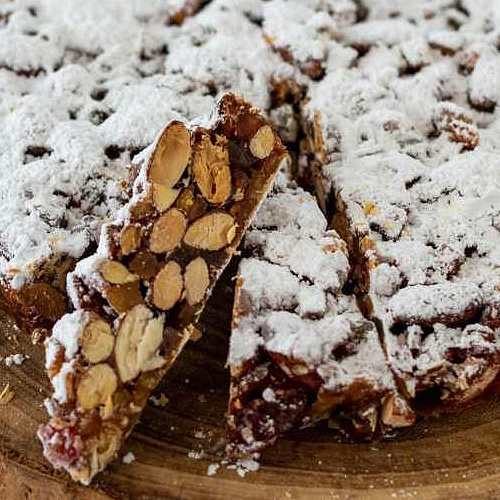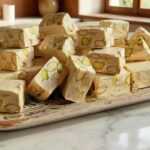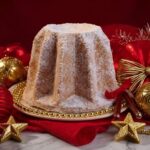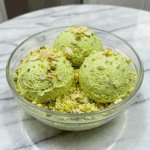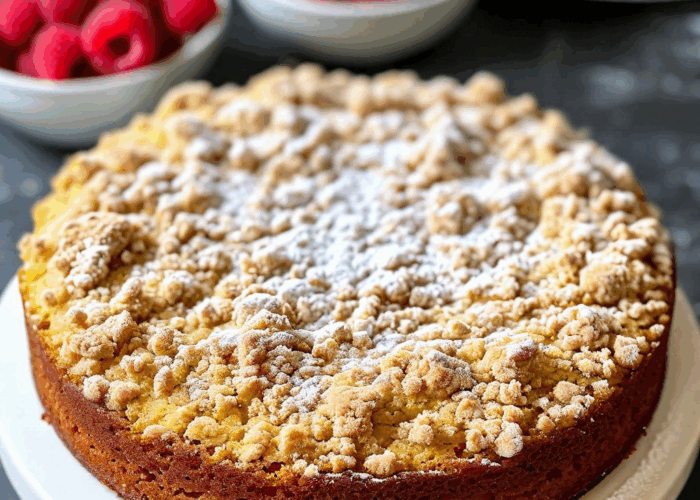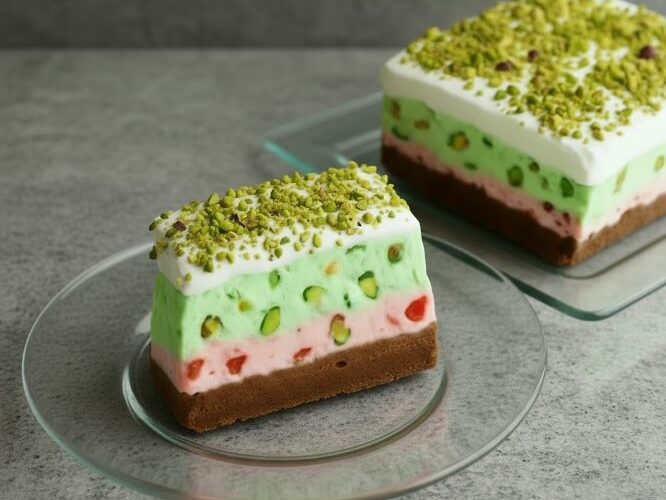Traditional Tuscan Panforte Cake: A Holiday Treat
Panforte is a dense, chewy fruit-and-nut cake that has delighted taste buds in Siena, Tuscany, for centuries. Its name, meaning “strong bread,” reflects its bold, layered flavors. Each slice combines honey, sugar, toasted almonds, and colorful candied fruits. A fragrant mix of warm spices, cinnamon, nutmeg, and a hint of black pepper gives it a rich, unforgettable taste. Every bite feels festive, comforting, and deeply satisfying.
Panforte dates back to the Middle Ages. Apothecaries and monks crafted it as a luxurious treat and believed it had medicinal benefits. It often appeared on tables for nobility or special religious occasions. By the 13th century, Siena already celebrated it as a local specialty. Over time, it became a holiday staple. Its spiced sweetness made it perfect for Christmas and festive gatherings, symbolizing abundance and tradition.
Today, bakers still follow traditional recipes. Some cakes get a light dusting of powdered sugar. Others wrap in delicate, edible rice paper. Served with sweet dessert wine or a hot cup of coffee, Panforte turns simple moments into special occasions.
Panforte is more than a dessert. It’s a taste of Tuscany. Each slice carries centuries of flavor, warmth, and history. Crunchy nuts, chewy fruits, and rich spices combine to create a cake that’s as much about tradition as it is about indulgence. Sharing Panforte feels like sharing a piece of Siena itself, a celebration of taste, culture, and festive spirit.
Serving
Panforte is really something special, rich and flavorful. Honestly, it’s best served in thin slices because, believe me, a little goes a long way! Traditionally, Italians like to pair it with a sweet dessert wine, like Vin Santo or Moscato. It really highlights that spiced sweetness of the cake. And if you’re in the mood for coffee, a strong cup of espresso is perfect too. It balances out all that richness with some warmth and just a hint of bitterness.
Now, if you’re celebrating something, why not dust the top with a bit of powdered sugar? Or you could put it on a nice decorative platter for that extra touch. Oh, and Panforte makes a great holiday gift! Just wrap it up in some parchment or even edible rice paper, tie it with a ribbon, and you’re good to go. Serve it at room temperature to really let those flavors pop, and encourage your guests to take their time enjoying it.
If you want to get fancy, consider adding some fresh citrus slices or a handful of roasted nuts on the side. It adds a nice texture and brightens up the whole experience.
Variations
While traditional Panforte follows the classic Tuscan recipe of nuts, candied fruits, and warm spices, there are plenty of delicious ways to mix it up:
Chocolate Panforte – Add 2–3 tablespoons of cocoa powder or chopped dark chocolate to the mix. It creates a richer, slightly bittersweet flavor that pairs beautifully with espresso.
Nut Mix Variations – Swap or combine almonds with walnuts, hazelnuts, or pistachios for added texture and flavor depth. Each nut brings a unique crunch and aroma.
Spice Twist – Experiment with a pinch of allspice, cardamom, or even a touch of chili for a subtle heat. These spices give Panforte a modern, unexpected kick.
Fruit Substitutions – Replace or complement candied citrus with dried cranberries, cherries, or figs. Dried tropical fruits like pineapple or mango can create a more exotic version.
Gluten-Free Version – Use almond flour or a gluten-free flour blend instead of regular flour. Panforte’s naturally dense, chewy texture makes it easy to adapt.
Mini Panforte – Make individual servings in small tart pans or muffin molds for gifts or party favors. Perfect for sharing at gatherings.
Storage:
Panforte keeps remarkably well, making it perfect for holiday prep or gifting. Once baked and fully cooled, wrap the cake tightly in plastic wrap or parchment paper to protect it from air and moisture. You can then store it at room temperature in a cool, dry place for up to 3–4 weeks.
Panforte can be frozen. Wrap it tightly in plastic and then in aluminum foil or an airtight container. It will keep in the freezer for up to 3 months. To enjoy, thaw slowly at room temperature while still wrapped to maintain its moisture and chewy texture.
Always slice Panforte just before serving, especially if stored. Its rich flavors deepen over time, so sometimes letting it rest a few days actually improves taste and texture. This makes it ideal for preparing ahead of holidays or special occasions—every slice tastes like tradition and celebration.

